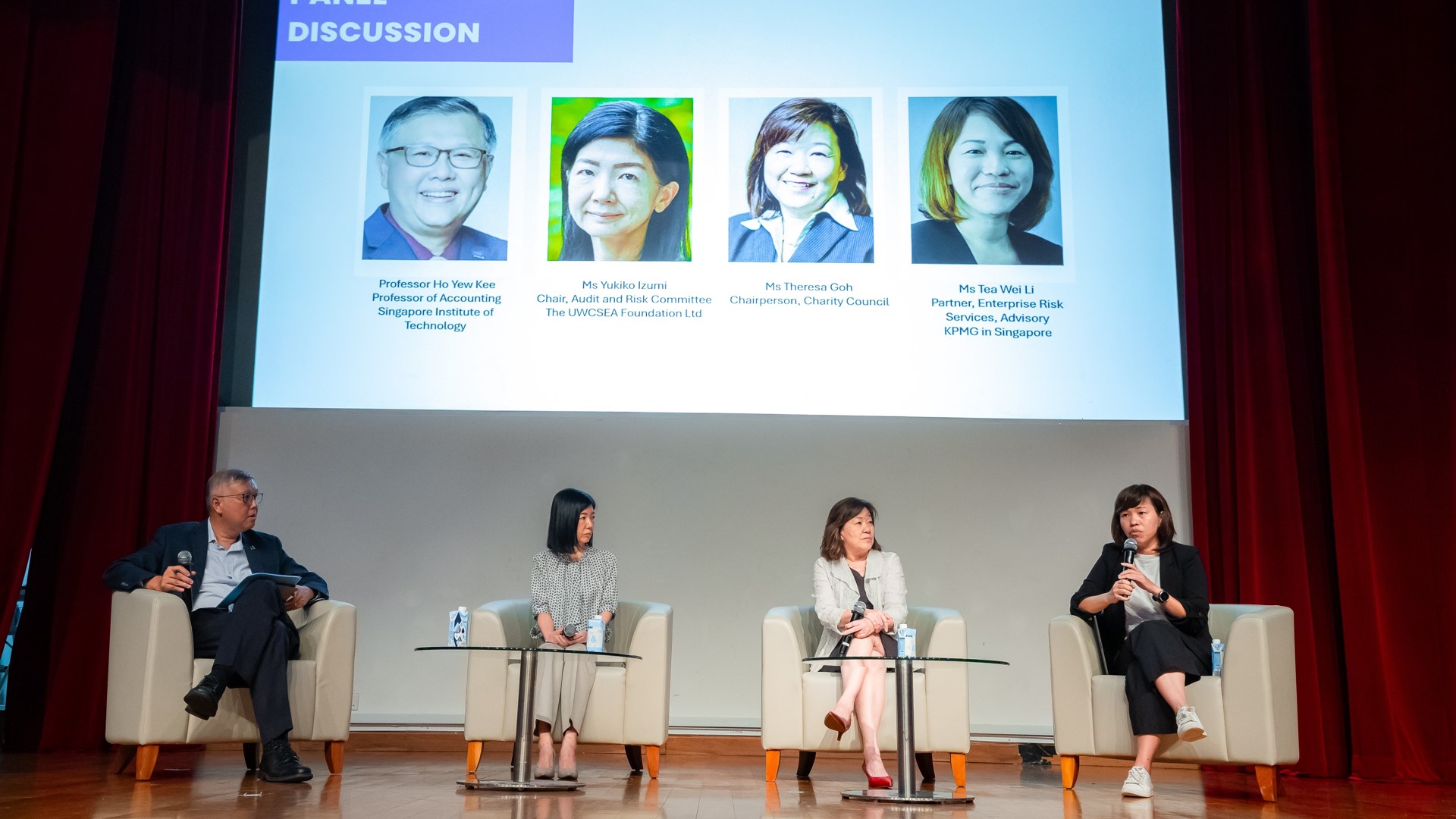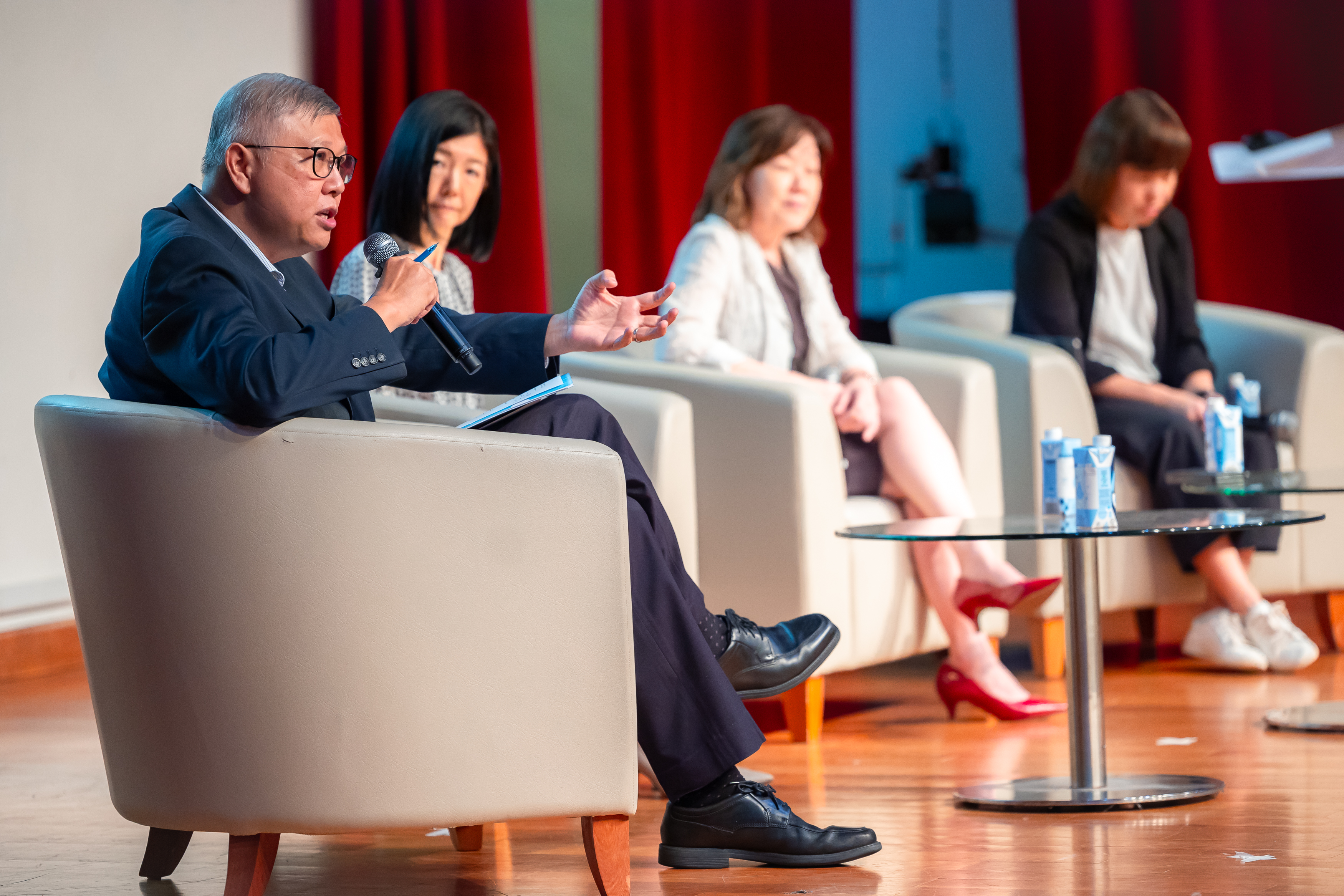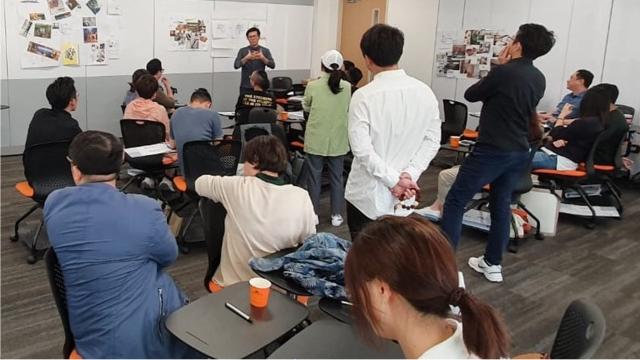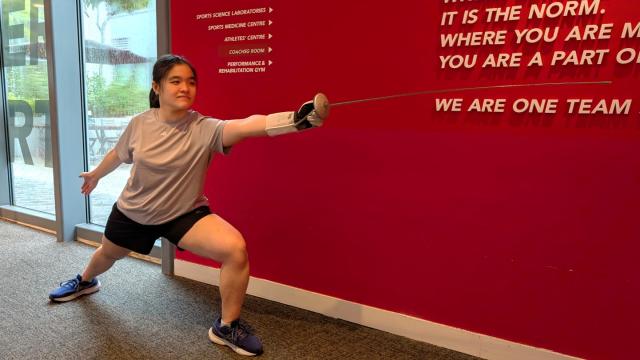A panel led by SIT discussed how local charities can adopt best practices and manage organisational risks through a comprehensive risk management strategy.

The panel discussion on risk management and best practices provided an overview of the state of the risk landscape across charities and was attended by more than 400 professionals from the charities sector. (Photo: MCCY)
In a rapidly evolving business environment, charities in Singapore need a sound risk management strategy to protect their resources, ensure compliance with regulations, reduce operational disruptions and safeguard their credibility.
Together with KPMG Singapore and the Charity Council, the Singapore Institute of Technology (SIT) held a panel sharing session on Risk Management and Best Practices for Charities at its Dover campus on 26 April. The event brought together leaders from charitable organisations as well as a distinguished panel of speakers for a well-rounded discussion. It also marked the official launch of the Enterprise Risk Management (ERM) toolkit for Charities and Institutions of a Public Character (IPCs) 2024 and the 2024 Risk Management Survey for Charities.
The 2024 Risk Management Survey for Charities was jointly conducted by the Charity Council, KPMG Singapore and academics of SIT's Business, Communications and Design Cluster. The survey findings facilitated the development of the ERM toolkit for Charities and IPCs 2024 which is a supplementary toolkit to complement the 2016 Risk Management Toolkit for charities. It covers new emerging risks for charities such as ESG and climate- related risks.
Professor Ho Yew Kee, a former Professor of Accounting at SIT, moderated the panel session. The panel was represented by Ms Theresa Goh, Chairperson of the Charity Council, Ms Tea Wei Li, Partner, Enterprise Risk Services, KPMG Singapore, and Ms Yukiko Izumi, Chair of UWCSEA Foundation Limited’s Audit and Risk Committee.
Starting the ERM Journey
Kicking off the discussion was Ms Theresa Goh, who has governance experience in both small and large charities. She advised start-up charities to focus on three key areas – the relevance of their social programmes, growing capital funding to reduce financial risk and putting in place good leadership to drive programmes. Once a charity grows large enough, risk management practices can be institutionalised into its operations.
Adding to Ms Goh’s point, Ms Yukiko Izumi highlighted the importance of institutionalising personal knowledge from handling past incidents. “In the risk management framework, it is important to document how past incidents were handled so that it doesn't just stay as a personal memory. Identifying the root causes of past incidents and developing mitigation plans helps a charitable organisation move from a reactive to a proactive risk management approach,” she said.
Embarking on the ERM journey also entails a mindset and value change, according to Theresa, who stressed that the Board needs to believe that risk management is critical to the charity’s survival. A successful risk management strategy requires the Board to prioritise it and clearly communicate to its rank-and-file staff.
Transforming the Organisation from Inside Out
Addressing the practicalities of executing an ERM transformation in a charitable organisation, Ms Tea Wei Li emphasised the importance of ownership. While external risk management consultants can be hired to facilitate the risk management process, if a suggestion is not practicable, the onus is on the organisation to highlight it to the external consultant. She suggested, “Charities need to identify key sponsors for ERM programmes within the organisation for successful knowledge transfer. Keep priorities and goals simple and executable to avoid ERM becoming a mere paper exercise.”
“While risk management responsibilities reside with the Board and the audit and risk committee, it is vital for management to own and start the whole risk management process,” agreed Prof Ho. “The journey will take time, but the management needs to identify the risk champions who can be entrusted with the responsibility to begin the process. You don’t need to cover all the risks at the start. Just start with the big items and evolve as you move along your journey.”
Ms Goh mentioned that ideally, a charitable organisation's audit and risk committee should be two separate committees so that much of the time is not devoted to discussing financial and internal control risks, making it too control-oriented and risk-focused. She cautioned companies from becoming too risk-focused, which may hinder creativity and innovation within the organisation.
Reviewing Risk Management Indicators
While charities incorporate ERM into their daily operations, Ms Tea emphasised the importance of integrating consistent horizon scanning and scenario analysis into its risk strategy. A good case in point is how the recent Fed interest rate hikes will impact charities’ funding when corporate sponsors cut back on charitable contributions.
“Risks must be constantly reviewed and robustly reflected in charities’ internal processes. Risk management issues need to be discussed at least once a year at the board level,” said Ms Goh.
She highlighted how unanticipated incidents such as employee harassment can adversely affect the organisation's reputational risk. Documenting such risks in the Human Resource handbook is an example of putting ERM into everyday practice.
Ultimately, 'relevancy risk' remains the greatest risk all charitable organisations face, asserted Prof Ho. To address this, charities need to carry out difficult conversations about their impact on the community, take a hard look at their allocation of resources and ensure that every donor dollar counts.

Before the panel discussion, Prof Ho (left) shared the survey findings of the 2024 Risk Management Survey for Charities and the challenges faced by charities in implementing risk management strategies. Fellow SIT professors A/Prof Desi Arisandi, A/Prof Chu Mui Kim, Asst Prof Phoebe Gao, Asst Prof Ricci Loh, and Senior Lecturer Yeap Lay Huay worked alongside Prof Ho on the survey. (Photo: MCCY)
Underlining the point, Prof Ho shared his experience with the Singapore Anti-Tuberculosis Association (SATA), which rebranded itself in 2009 with a renewed focus on public health services and education – a shift away from tuberculosis treatment which the organisation first started. Prof Ho urged audience members to know their relevancy and effectiveness as a charity.
Robust Business Continuity Practices
The panel wrapped with a discussion on charities’ business continuity practices (BCP). Ms Tea encouraged organisations to relook at legacy business practices and embrace new changes in today’s operating environment.
For Ms Goh, the COVID-19 pandemic had highlighted the importance of a comprehensive and robust BCP plan in shoring up organisations’ morale and performance. While preparedness matters, Ms Izumi stressed the need for good communication over executing planned scenarios in the event of a crisis.
As Prof Ho summed up, “Make all your plans during peacetime. While no one can predict the future, forward-thinking makes a difference when a crisis hits, as COVID-19 has shown us.”

![[FA] SIT One SITizen Alumni Initiative_Web banner_1244px x 688px.jpg](/sites/default/files/2024-12/%5BFA%5D%20%20SIT%20One%20SITizen%20Alumni%20Initiative_Web%20banner_1244px%20x%20688px.jpg)

